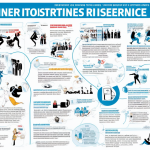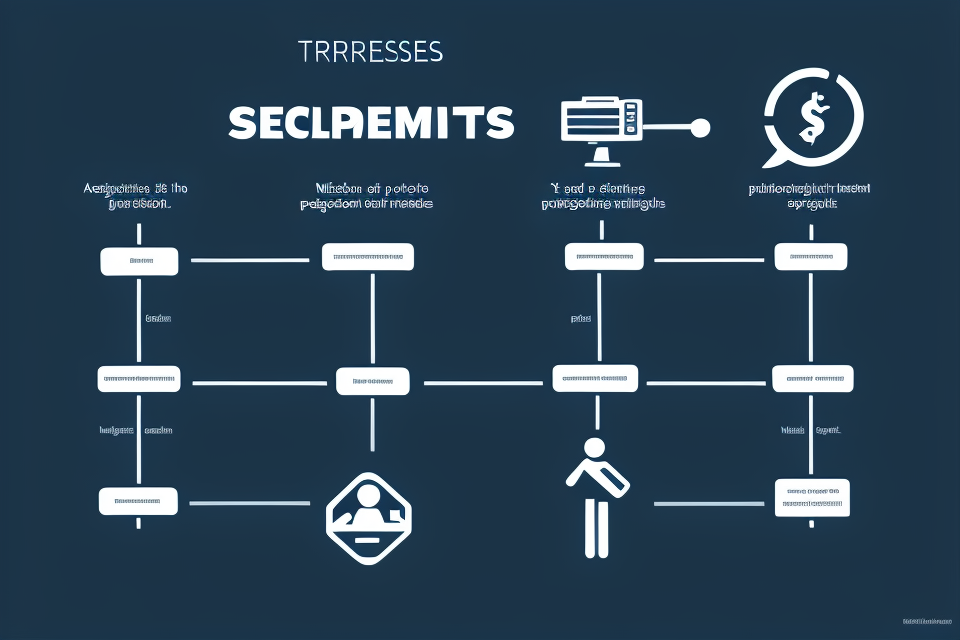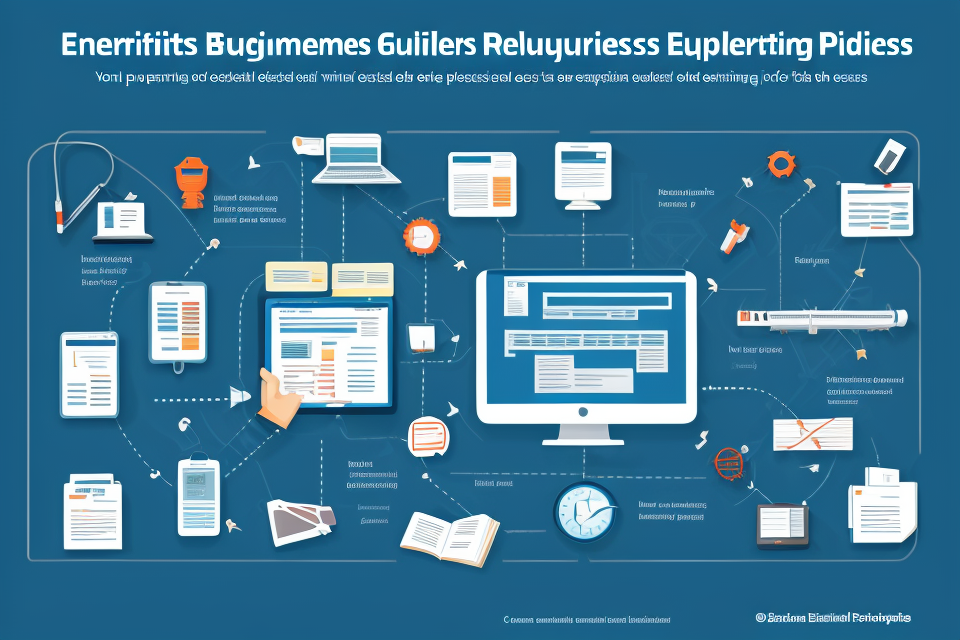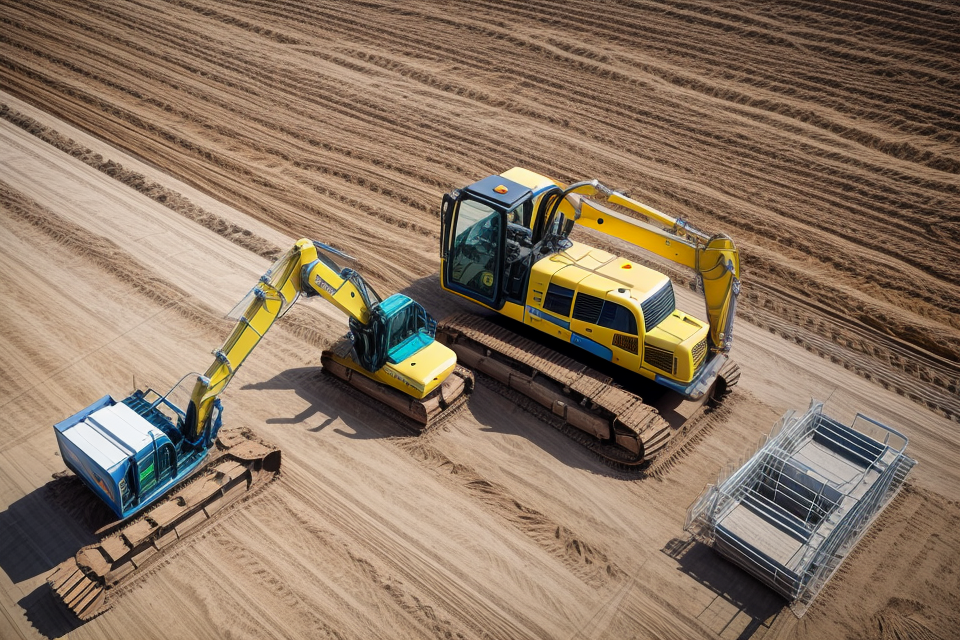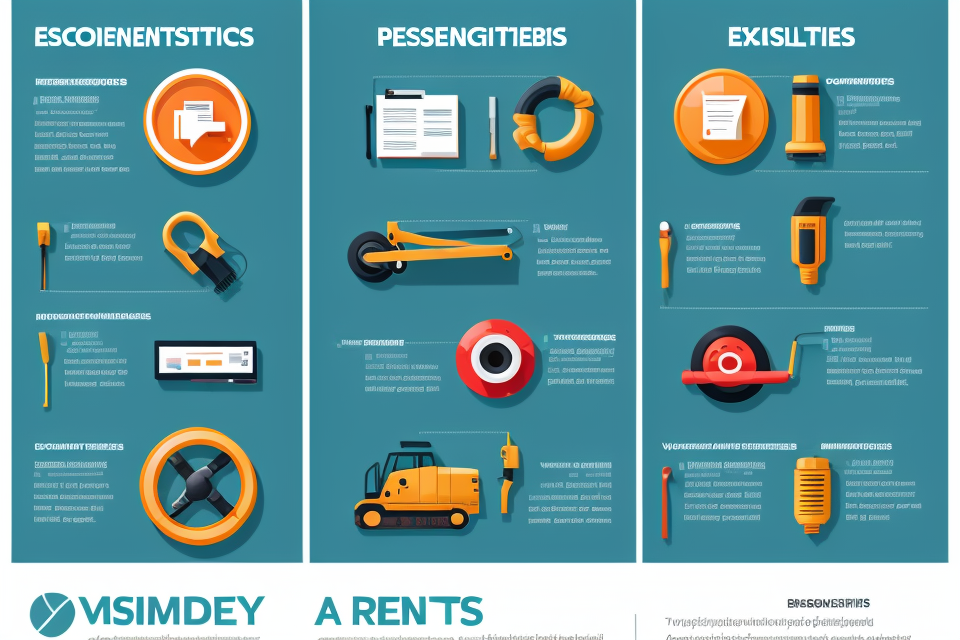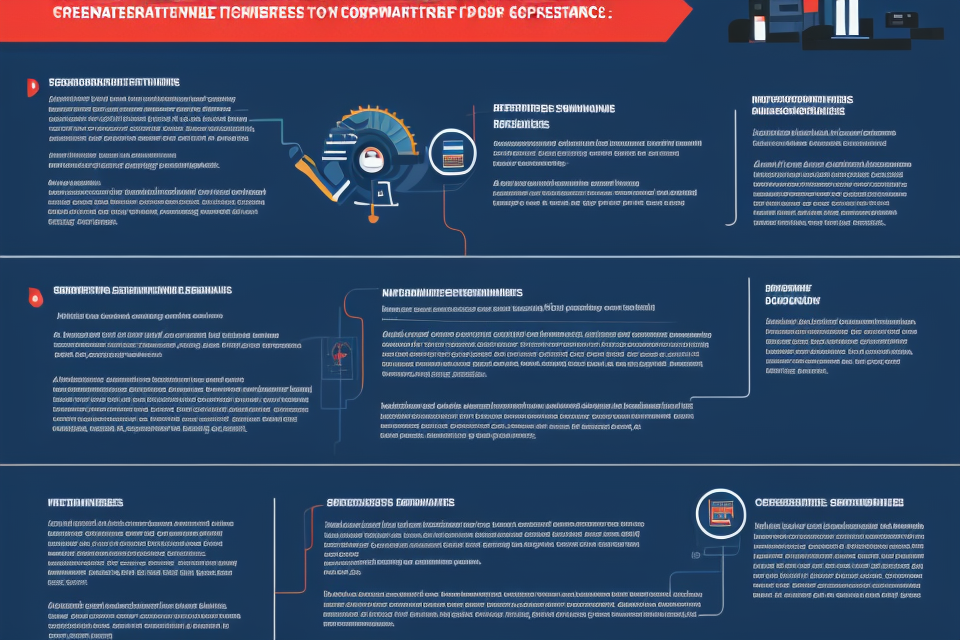Equipment selection is a crucial process for any business or organization that relies on tools and machinery to get the job done. The right equipment can make all the difference in terms of efficiency, productivity, and safety. However, with so many options on the market, selecting the right equipment can be a daunting task. That’s why we’ve put together this comprehensive guide to the equipment selection process. In this guide, we’ll cover everything you need to know about selecting the right equipment for your needs, from identifying your requirements to evaluating different options and making a final decision. Whether you’re a small business owner or a manager in a large organization, this guide will help you make informed decisions and get the most out of your equipment investments.
Understanding the Equipment Selection Process
Importance of Equipment Selection
Equipment selection is a crucial process that has a significant impact on various aspects of a business or organization. In this section, we will discuss the importance of equipment selection and how it affects productivity, safety, and cost.
- Impact on productivity
The equipment selection process plays a vital role in determining the efficiency and productivity of a business. The right equipment can increase the speed and accuracy of production, leading to higher output and improved profitability. On the other hand, inadequate or poorly chosen equipment can lead to decreased productivity, increased downtime, and lower overall efficiency.
- Impact on safety
Equipment selection also has a significant impact on safety. The right equipment can help reduce the risk of accidents and injuries, protecting employees and ensuring a safer work environment. Conversely, inadequate or poorly chosen equipment can increase the risk of accidents and injuries, leading to potential legal and financial consequences.
- Impact on cost
The equipment selection process also has a significant impact on cost. The right equipment can help reduce operating costs, maintenance costs, and downtime costs, leading to improved profitability. On the other hand, inadequate or poorly chosen equipment can lead to increased costs, both in terms of direct expenses and indirect costs such as lost productivity and downtime.
Overall, the equipment selection process is critical to the success of any business or organization. By carefully considering the impact of equipment selection on productivity, safety, and cost, businesses can make informed decisions that will have a lasting impact on their operations and bottom line.
Key Considerations in Equipment Selection
Equipment selection is a crucial process that involves careful evaluation of various factors to determine the most suitable equipment for a particular task or application. There are several key considerations that must be taken into account during the equipment selection process.
Performance Requirements
The first and most important consideration in equipment selection is the performance requirements. The equipment must be capable of performing the required task efficiently and effectively. The performance requirements depend on the specific application, and they include factors such as production rate, accuracy, and precision.
For example, if the task requires the production of a specific product, the equipment must be capable of producing the product within the required tolerances and at the required production rate. It is also important to consider the equipment’s capacity to handle the volume of work required.
Safety Standards
The safety of the personnel operating the equipment is another important consideration in equipment selection. The equipment must meet all relevant safety standards and regulations to ensure the safety of the operators.
It is important to consider the potential hazards associated with the equipment and to select equipment that has the necessary safety features to mitigate these hazards. For example, if the equipment is used in a hazardous environment, it must be designed to minimize the risk of explosion or fire.
Maintenance Requirements
The maintenance requirements of the equipment are also an important consideration in equipment selection. The equipment must be easy to maintain and repair to minimize downtime and maintenance costs.
It is important to consider the availability of spare parts and the technical expertise required to maintain the equipment. The equipment should also be designed with maintenance in mind, with easily accessible components and clear instructions for maintenance procedures.
Cost Considerations
Finally, cost is a critical consideration in equipment selection. The equipment must be affordable and provide a good return on investment. It is important to consider the total cost of ownership, including the initial purchase price, installation costs, operating costs, and maintenance costs.
It is also important to consider the long-term cost implications of the equipment, such as its expected lifespan and the potential for future upgrades or replacements.
In conclusion, the equipment selection process involves several key considerations, including performance requirements, safety standards, maintenance requirements, and cost considerations. By carefully evaluating these factors, it is possible to select the most suitable equipment for a particular task or application.
Equipment Selection Steps
Step 1: Identify Needs and Requirements
When it comes to selecting the right equipment for a project, the first step is to identify the needs and requirements that the equipment must meet. This involves several key considerations:
Define project scope and objectives
The project scope and objectives define what the project is supposed to accomplish and what the expected outcomes are. Therefore, it is important to clearly define these at the outset to ensure that the equipment selected will support the project’s goals.
Determine performance requirements
Once the project scope and objectives have been defined, the next step is to determine the performance requirements that the equipment must meet. This includes identifying the specific tasks that the equipment will be required to perform, as well as any performance metrics that must be met.
For example, if the project involves excavation work, the equipment must be capable of performing the excavation tasks efficiently and effectively, while also meeting any safety or environmental regulations that apply.
Consider safety standards
Safety is a critical consideration when selecting equipment for any project. It is important to ensure that the equipment selected meets all relevant safety standards and regulations, both for the equipment itself and for the environment in which it will be used.
This may include factors such as the equipment’s structural integrity, the presence of safety features such as guards and sensors, and the equipment’s overall safety record.
Overall, identifying the needs and requirements for a project is a crucial first step in the equipment selection process. By carefully defining the project scope and objectives, determining the performance requirements, and considering safety standards, it is possible to ensure that the equipment selected will meet the project’s needs and support its goals.
Step 2: Research Available Equipment
Identify Potential Equipment Options
- Begin by creating a list of all the equipment types and models that meet your project requirements and budget constraints.
- Consider consulting with equipment rental companies, suppliers, or industry experts to gather information on the latest equipment and technologies available.
Gather Technical Specifications
- Obtain detailed technical specifications for each piece of equipment, including power requirements, dimensions, weight, and any other relevant features.
- Ensure that the equipment specifications align with your project requirements and can be accommodated within your project site.
Compare Equipment Performance and Cost
- Analyze the performance of each piece of equipment, taking into account factors such as efficiency, productivity, and durability.
- Compare the costs of each piece of equipment, including upfront costs, operating costs, and maintenance costs, to determine the total cost of ownership.
- Consider the potential long-term benefits of investing in higher-quality equipment, such as increased efficiency, reduced maintenance costs, and longer lifespan.
By thoroughly researching available equipment options, you can make an informed decision when selecting the equipment that will best meet your project needs and budget constraints.
Step 3: Evaluate Equipment
When evaluating equipment, it is important to consider several factors to ensure that the equipment meets the needs of the project. The following are some key considerations for evaluating equipment:
Conduct Equipment Testing and Demonstrations
Before making a final decision on which equipment to purchase, it is important to conduct testing and demonstrations to ensure that the equipment meets the performance requirements of the project. This may involve conducting hands-on testing of the equipment, as well as observing demonstrations from suppliers or manufacturers.
During the testing and demonstration process, it is important to pay close attention to the following factors:
- Performance: Does the equipment perform as expected and meet the required specifications?
- Durability: How long will the equipment last and how resistant is it to wear and tear?
- Reliability: How reliable is the equipment and how often will it need to be repaired or maintained?
Evaluate Equipment Against Performance Requirements
When evaluating equipment, it is important to compare it against the performance requirements of the project. This involves assessing whether the equipment is capable of meeting the desired output, efficiency, and quality standards.
To evaluate equipment against performance requirements, it is important to consider the following factors:
- Capacity: Does the equipment have the capacity to handle the workload and meet the production goals of the project?
- Efficiency: How efficient is the equipment and how much energy or resources does it consume?
- Quality: Does the equipment produce the desired quality of output and meet the required standards?
Consider Maintenance and Support Services
In addition to evaluating the equipment itself, it is also important to consider the maintenance and support services that are available from the supplier or manufacturer. This includes assessing the availability of spare parts, repair services, and technical support.
To evaluate maintenance and support services, it is important to consider the following factors:
- Availability: Are spare parts and repair services readily available when needed?
- Cost: What is the cost of maintenance and support services, and how does it compare to other suppliers or manufacturers?
- Technical Support: Is technical support available, and how responsive and knowledgeable is the support team?
By carefully evaluating equipment against these factors, project managers can ensure that they select the right equipment for their project, which can help to improve project outcomes and minimize risks.
Step 4: Make a Decision
After gathering all the necessary information about the equipment options, it’s time to make a decision. The decision-making process should involve weighing the costs and benefits of each option, considering the long-term implications, and selecting the most appropriate equipment.
Weigh costs and benefits of each option
When making a decision, it’s important to consider the costs and benefits of each equipment option. This includes not only the initial purchase price but also the ongoing maintenance and operational costs. Additionally, consider the potential benefits of each option, such as increased efficiency, improved performance, or reduced downtime.
Consider long-term implications
When selecting equipment, it’s important to consider the long-term implications of the decision. This includes not only the lifespan of the equipment but also how it will fit into the organization’s future plans. For example, if the organization plans to expand in the near future, it may be important to select equipment that can be easily scaled up or adapted to meet future needs.
Select the most appropriate equipment
After considering the costs, benefits, and long-term implications of each equipment option, it’s time to select the most appropriate equipment for the organization’s needs. This decision should be based on a comprehensive analysis of all the available information and should take into account the organization’s goals, budget, and other relevant factors.
In summary, making a decision during the equipment selection process involves weighing the costs and benefits of each option, considering the long-term implications, and selecting the most appropriate equipment based on a comprehensive analysis of all available information.
Equipment Selection Techniques
Cost-Benefit Analysis
Calculate total cost of ownership
When conducting a cost-benefit analysis, it is essential to consider the total cost of ownership (TCO) of the equipment. TCO is the sum of all costs associated with owning and operating the equipment, including the initial purchase price, installation costs, maintenance and repair expenses, and any other costs that may arise over the equipment’s lifespan.
Compare to benefits
Once the TCO has been calculated, it is crucial to compare it to the benefits that the equipment will provide. The benefits can include increased productivity, improved efficiency, or better quality output. It is important to evaluate the potential benefits in terms of their impact on the organization’s bottom line and how they align with the organization’s goals and objectives.
Evaluate return on investment
The final step in a cost-benefit analysis is to evaluate the return on investment (ROI) of the equipment. ROI is a measure of the financial benefit that the equipment will provide relative to its cost. To calculate ROI, the benefits of the equipment are subtracted from the costs, and the result is expressed as a percentage. A positive ROI indicates that the equipment will generate more financial benefit than it costs, while a negative ROI indicates that the equipment will not be a sound investment.
Overall, a cost-benefit analysis is a valuable tool for evaluating the potential value of equipment and making informed decisions about equipment purchases. By considering the TCO, comparing the benefits, and evaluating the ROI, organizations can ensure that they are making sound investments that will contribute to their success.
Risk Assessment
Equipment selection is a critical process that requires careful consideration of various factors, including the risks associated with the equipment. Risk assessment is an essential technique that can help identify potential risks and evaluate their likelihood and impact. This section will discuss the details of risk assessment in the equipment selection process.
Identifying Potential Risks
The first step in risk assessment is to identify potential risks associated with the equipment. Risks can be categorized into two types:
- Direct Risks: These are risks that are directly related to the equipment, such as equipment failure, breakdown, or malfunction.
- Indirect Risks: These are risks that are not directly related to the equipment but can affect the equipment or the project, such as environmental risks, supply chain risks, or regulatory risks.
To identify potential risks, it is essential to conduct a thorough analysis of the equipment’s functionality, performance, and operational requirements. This analysis should consider the equipment’s specifications, maintenance requirements, and operating conditions.
Evaluating Likelihood and Impact
Once the potential risks have been identified, the next step is to evaluate their likelihood and impact. Likelihood refers to the probability of the risk occurring, while impact refers to the severity of the risk’s consequences.
To evaluate the likelihood of a risk, it is essential to consider the frequency and duration of the risk’s occurrence. For example, if a piece of equipment has a high likelihood of breaking down, it may require more frequent maintenance or replacement.
To evaluate the impact of a risk, it is essential to consider the consequences of the risk’s occurrence. For example, if a piece of equipment fails, it may cause delays in the project timeline, result in additional costs, or compromise safety.
Selecting Equipment that Minimizes Risks
After evaluating the likelihood and impact of risks, the next step is to select equipment that minimizes risks. This involves choosing equipment that is reliable, efficient, and safe, and that meets the project’s specific requirements.
When selecting equipment, it is essential to consider factors such as the equipment’s quality, performance, and maintenance requirements. It is also crucial to consider the equipment’s compatibility with other equipment and systems and its ability to meet regulatory requirements.
In conclusion, risk assessment is an essential technique in the equipment selection process. By identifying potential risks, evaluating their likelihood and impact, and selecting equipment that minimizes risks, businesses can ensure that they choose the right equipment for their projects, minimize costs and delays, and maintain safety and compliance.
Equipment Reliability Analysis
Equipment reliability analysis is a crucial aspect of the equipment selection process. It involves evaluating the reliability data of different equipment options to determine which equipment has the highest reliability. Here are some steps to follow when conducting equipment reliability analysis:
Evaluate equipment reliability data
The first step in equipment reliability analysis is to evaluate the reliability data of different equipment options. This data can include information on the mean time between failures (MTBF), mean time to repair (MTTR), and mean time to failure (MTTF) of each equipment option. This information can be obtained from the manufacturer or from reliability reports.
It is important to note that the reliability data should be accurate and up-to-date. Outdated data can lead to incorrect conclusions and result in the selection of unreliable equipment.
Compare reliability of different equipment options
Once the reliability data has been evaluated, the next step is to compare the reliability of different equipment options. This can be done by creating a reliability chart or curve that plots the MTBF, MTTR, and MTTF of each equipment option. The chart can help to identify the most reliable equipment option based on the data.
It is important to consider the operating environment when comparing the reliability of different equipment options. For example, equipment that is used in harsh environments may require more frequent maintenance and repair, which can affect its reliability.
Select equipment with highest reliability
After evaluating and comparing the reliability of different equipment options, the final step is to select the equipment with the highest reliability. This equipment will be the most reliable and will require fewer maintenance and repair costs over its lifecycle.
It is important to note that reliability is not the only factor to consider when selecting equipment. Other factors such as cost, performance, and maintenance requirements should also be considered to ensure that the selected equipment meets the needs of the organization.
In conclusion, equipment reliability analysis is a critical step in the equipment selection process. By evaluating and comparing the reliability of different equipment options, organizations can select the most reliable equipment that meets their needs and minimizes maintenance and repair costs over its lifecycle.
Equipment Selection Documentation
Equipment Specifications
When selecting equipment for a project, it is crucial to have a clear understanding of the specifications that the equipment must meet. These specifications can be broken down into three main categories: technical specifications, performance requirements, and safety standards.
- Technical specifications are the details that describe the physical and functional characteristics of the equipment. This includes specifications such as the equipment’s size, weight, power requirements, and any other relevant features. It is important to ensure that the equipment meets these specifications to ensure that it will be compatible with the project’s requirements.
- Performance requirements are the standards that the equipment must meet in terms of its ability to perform its intended function. This includes specifications such as the maximum output, speed, or capacity of the equipment. It is important to establish these requirements early in the selection process to ensure that the equipment selected will be able to meet the project’s needs.
- Safety standards are the guidelines that must be followed to ensure that the equipment is safe to use. This includes specifications such as the equipment’s electrical and mechanical safety features, as well as any relevant safety regulations that must be followed. It is important to prioritize safety when selecting equipment to ensure that the project is completed without any accidents or incidents.
By considering these three categories of equipment specifications, the selection process can be more effective and efficient. The equipment selected will be better suited to meet the project’s requirements, and safety will be prioritized to ensure a successful outcome.
Purchase Order
When it comes to the purchase of equipment, a purchase order is a critical document that outlines the details of the equipment purchase. This document serves as a legal contract between the buyer and the seller and is used to confirm the terms and conditions of the equipment purchase. Here are some key components of a purchase order:
Equipment Purchase Details
The equipment purchase details section of the purchase order should include the following information:
- The type and model of the equipment being purchased
- The quantity of the equipment being purchased
- The price of the equipment being purchased
- Any additional features or options being purchased
Delivery and Installation Schedule
The delivery and installation schedule section of the purchase order should include the following information:
- The expected delivery date of the equipment
- The location for delivery and installation of the equipment
- The name and contact information of the person responsible for scheduling the delivery and installation
Payment Terms and Conditions
The payment terms and conditions section of the purchase order should include the following information:
- The total amount due for the equipment purchase
- The payment due date
- The payment method (e.g. credit card, check, wire transfer)
- Any late payment fees or penalties
Overall, a purchase order is a crucial document that outlines the details of the equipment purchase and serves as a legal contract between the buyer and the seller. By including all of the necessary information in the purchase order, both parties can ensure that the equipment purchase process runs smoothly and efficiently.
Maintenance Plan
The maintenance plan is a critical component of the equipment selection process, as it outlines the procedures and schedules necessary to ensure that the equipment remains in good working condition throughout its lifecycle. The following are the key elements of a maintenance plan:
- Maintenance Schedule and Procedures: The maintenance schedule should outline the specific tasks that need to be performed at regular intervals, such as cleaning, lubrication, and inspection. The procedures should detail the steps required to perform each task, including the tools and equipment needed, the safety precautions that should be taken, and the documentation that should be completed.
- Spare Parts Inventory: The spare parts inventory should list all the components that are required to maintain the equipment, along with their specifications and quantities. This inventory should be regularly updated to ensure that the necessary parts are available when needed.
- Training Requirements: The training requirements should outline the specific skills and knowledge that are required to maintain the equipment. This may include technical training, safety training, or other specialized training programs. The training requirements should be included in the overall training plan for the equipment, which should be developed and implemented in conjunction with the maintenance plan.
By developing a comprehensive maintenance plan, organizations can ensure that their equipment is well-maintained, reducing the risk of breakdowns and extending the lifespan of the equipment. The maintenance plan should be regularly reviewed and updated to reflect changes in the equipment or the operating environment.
FAQs
1. What is the equipment selection process?
The equipment selection process is the process of identifying and evaluating different types of equipment needed for a specific project or task. It involves considering factors such as the project’s scope, budget, safety requirements, and environmental regulations to determine the most suitable equipment for the job.
2. Why is it important to have a comprehensive guide to the equipment selection process?
Having a comprehensive guide to the equipment selection process is important because it helps to ensure that the right equipment is selected for the job. This can save time, money, and resources, and can also help to ensure that the project is completed safely and efficiently. A comprehensive guide can also help to ensure that the equipment is compatible with other equipment and systems, and that it meets all necessary safety and regulatory requirements.
3. What are the steps involved in the equipment selection process?
The equipment selection process typically involves several steps, including: defining the project’s scope and requirements, researching and identifying potential equipment options, evaluating and comparing the options based on factors such as cost, performance, and compatibility, and making a final decision on the most suitable equipment.
4. How do you determine the budget for the equipment selection process?
The budget for the equipment selection process should be determined based on the project’s scope and requirements. This can involve considering factors such as the cost of the equipment, installation and maintenance costs, and any other associated expenses. It is important to have a clear understanding of the budget before beginning the equipment selection process to ensure that the right equipment is selected within the allocated funds.
5. What are some key factors to consider when evaluating equipment options?
When evaluating equipment options, it is important to consider factors such as the equipment’s performance, reliability, compatibility with other systems, and compliance with safety and regulatory requirements. It is also important to consider the cost of the equipment, including installation and maintenance costs, as well as any potential operational costs. Additionally, it may be helpful to consider the reputation of the equipment manufacturer and the level of support and service they provide.
6. How do you ensure that the selected equipment meets safety and regulatory requirements?
To ensure that the selected equipment meets safety and regulatory requirements, it is important to research and understand the relevant regulations and standards that apply to the project. This may involve consulting with safety and regulatory experts, as well as checking the equipment’s certifications and compliance documents. It is also important to consider any potential hazards or risks associated with the equipment and to implement appropriate safety measures to mitigate these risks.
7. How do you ensure that the selected equipment is compatible with other equipment and systems?
To ensure that the selected equipment is compatible with other equipment and systems, it is important to consider the equipment’s technical specifications and to research its compatibility with other systems and equipment. This may involve consulting with technical experts or conducting tests to ensure that the equipment is compatible with other systems and equipment. It is also important to consider any potential challenges or issues that may arise from using the selected equipment in conjunction with other systems and to implement appropriate solutions to address these challenges.



